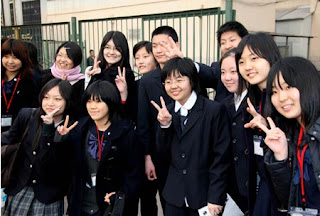Science Education Today (1989)
According to (Alan J. McCormack, 1992) The traditional view considered that science was knowledge of the universe that had accumulated throughout recorded history. Only recently (the last thirty-five years) has three been much attention directed to science processes, the skills that scientists use to discover new knowledge. However, it is clear today that Three is much more to science education than content and processes. McComarck and Yager (1989b) developer a new “Taxonomy for Science Education” that broadens the view of science education beyond the two domains of content and process into five domains that should be considered crucial for any good science curriculum. Curriculum developers can use a taxonomy as a blueprint for direction in the designing a new program. Evaluators can use taxonomy as a yardstick against which existing programs can be assesed. The taxonomy’s authors “see five domains of science education which are all are important as we work toward helping all students attain a scientific literacy needed for living in our current society-and one needed if we are to resolve current problems threeby producing a better future”
According to (Alan J. McCormack, 1992) The traditional view considered that science was knowledge of the universe that had accumulated throughout recorded history. Only recently (the last thirty-five years) has three been much attention directed to science processes, the skills that scientists use to discover new knowledge. However, it is clear today that Three is much more to science education than content and processes. McComarck and Yager (1989b) developer a new “Taxonomy for Science Education” that broadens the view of science education beyond the two domains of content and process into five domains that should be considered crucial for any good science curriculum. Curriculum developers can use a taxonomy as a blueprint for direction in the designing a new program. Evaluators can use taxonomy as a yardstick against which existing programs can be assesed. The taxonomy’s authors “see five domains of science education which are all are important as we work toward helping all students attain a scientific literacy needed for living in our current society-and one needed if we are to resolve current problems threeby producing a better future”
Disini disebutkan bahwa pandangan tradisional menganggap bahwa sains itu merupakan kumpulan pengetahuan alam semesta yang sudah sejak dulu ada. Namun pandangan itu pada 35 tahun terakhir terhitung sebelum 1989 sains mulai memperhatikan ranah proses dan konten. Pada perkembangannya sains dalam dunia pendidikan tidak hanya memperhatikan dua domain konten dan proses tadi melainkan juga memperhatikan tiga domain lainnya yang diusulkan oleh McComark dan Yager.
Dalam (De Miranda, 2008) disebutkan bahwa taksonomi McComark dan Yager was designed to help students become scientifically and technologically literate atau dapat diartikan suatu desain untuk membantu siswa menjadi lebih saintifik dan mengenal lebih dekat teknologi. Lebih lanjut dijelaskan bahwa The five hierarchical domains were organized by importance: (a) knowing and understanding (scientific information), (b) exploring and discovering (scientific processes), (c) imagining and creating (creative), (d) feeling and valuing (attitudinal), and (e) using and applying (application and connections). The taxonomy listed what students could do or learn in each domain. McCormack and Yager (1989) asserted that too often, science education limited students to the first two domains that primarily focused on the processes and products of science. They stated that the other three domains needed to be included more often in science instruction due to the increased focus on science, technology, and societal issues.
Dari paparan diatas yang dapat diartikan bahwa dalam dunia pendidikan McCormack and Yager berpendapat bahwa tidak cukup hanya memperhatikan domain konten dan proses saja namun juga harus memperhatikan tiga domain lainnya yakni untuk meningkatkan fokus atau perhatian pada sains, teknologi dan masalah masyarakat itu sendiri.
McCormark, Alan J. 1992. Science Curriculum Resource Handbook. Kraus International Publications: New York

No comments:
Post a Comment